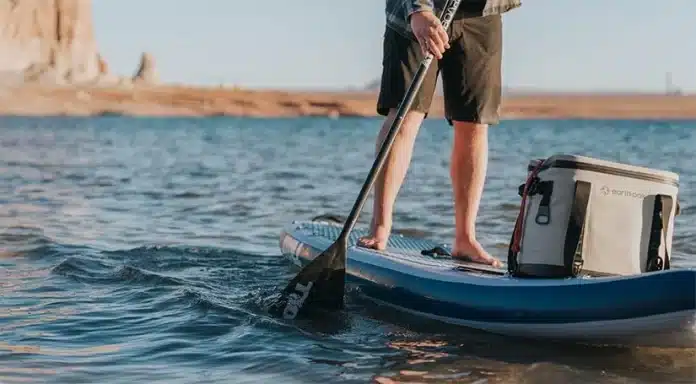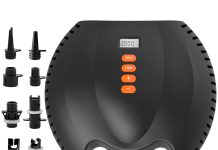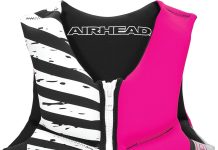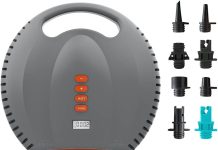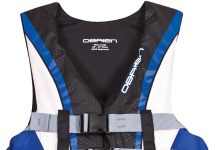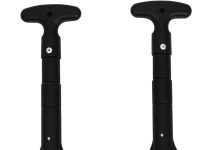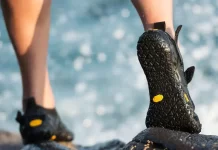Are you a fan of stand-up paddleboarding and in the market for a new paddle? The eternal debate between fiberglass and carbon fiber for SUP paddles has left many water enthusiasts scratching their heads.
In this article, we explore the benefits and drawbacks of both materials, providing you with the information you need to make an informed decision. Embark on this journey with us as we unravel the secrets behind the ultimate SUP paddle material for your water adventures.
Weight
Fiberglass
Fiberglass is known for its lightweight properties, making it an excellent choice for SUP paddle construction. The composite material combines fine glass fibers with a resin matrix, resulting in a weight significantly lighter than other materials. This makes fiberglass paddles easy maneuvering and reduces fatigue during long paddling sessions.
Carbon Fiber
Carbon fiber is renowned for its incredible strength-to-weight ratio, which translates to lightweight paddles with exceptional performance. Carbon fiber comprises thin, strong strands of carbon woven together and impregnated with resin. This combination results in a paddle that is not only incredibly light but also highly durable and stiff.
Durability
Fiberglass
Fiberglass paddles are known for their durability and ability to withstand everyday wear and tear. The glass fibers used in the construction add strength and resilience, making them resistant to impact and abrasion. While fiberglass paddles may not be as robust as carbon fiber paddles, they still offer a reliable option for recreational paddlers.
Carbon Fiber
Carbon fiber paddles are unmatched when it comes to durability. The robust carbon strands in their construction provide exceptional resistance to impact, bending, and breaking. Carbon fiber paddles can withstand intense paddling conditions and are often preferred for professional and high-performance paddlers.
Stiffness
Fiberglass
Fiberglass paddles offer a good balance of stiffness and flex. The fiberglass composite construction provides enough rigidity to transfer energy efficiently while allowing a slight flex for a more comfortable stroke. This combination makes fiberglass paddles suitable for various paddling styles and skill levels.
Carbon Fiber
Carbon fiber paddles excel in stiffness due to the inherent properties of the carbon material. Carbon fiber paddles have minimal flex, maximizing power transfer with every stroke. This stiffness enhances performance by allowing for more precise and efficient paddle strokes, making them the preferred choice for competitive paddling or anyone seeking the highest level of performance.
Flex
Fiberglass
Fiberglass paddles offer moderate flex, providing some forgiveness and comfort during extended paddling sessions. The flexible nature of fiberglass allows for a more forgiving stroke, reducing strain on the wrists and shoulders. This makes fiberglass paddles an excellent choice for recreational paddlers or those seeking a more relaxed paddling experience.
Carbon Fiber
Carbon fiber paddles have minimal flex, prioritizing power and efficiency over comfort. The stiffness of carbon fiber paddles allows for a more direct transfer of energy, translating into a powerful stroke. However, the lack of flex can be more fatiguing on the joints, particularly during long-distance paddling or when navigating rough waters.
Cost
Fiberglass
Fiberglass paddles are generally more affordable than carbon fiber paddles. The relatively lower cost is due to the less expensive materials used in their construction. This affordability makes fiberglass paddles an excellent option for beginners or recreational paddlers looking for a high-quality paddle without breaking the bank.
Carbon Fiber
Carbon fiber paddles have a higher price point than fiberglass ones. The cost is primarily driven by the premium carbon material used in their construction. However, the investment in a carbon fiber paddle is justified by its exceptional performance and durability. Professional paddlers or those seeking top-tier performance often favor carbon fiber paddles.
Performance
Fiberglass
Fiberglass paddles offer reliable performance across various paddling conditions. Their moderate stiffness and flex provide a good balance of power and comfort. Fiberglass paddles allow for smooth and controlled strokes, making them suitable for various skill levels and paddling styles. They offer excellent maneuverability and responsiveness on the water, ensuring an enjoyable paddling experience.
Carbon Fiber
Carbon fiber paddles deliver unmatched performance on the water. The stiffness of the carbon material ensures maximum power transfer, allowing paddlers to generate more force with each stroke. This increased efficiency translates into improved speed, acceleration, and maneuverability. Carbon fiber paddles are the go-to choice for professional paddlers and those seeking the highest level of performance.
Maintenance
Fiberglass
Fiberglass paddles require minimal maintenance to keep them in excellent condition. Regular rinsing with freshwater after each use is recommended to remove any salt or dirt buildup. It is advisable to store fiberglass paddles in a protective bag or case and avoid prolonged exposure to direct sunlight, as excessive heat can cause the resin to degrade over time. With proper care, fiberglass paddles can last for many seasons of paddling.
Carbon Fiber
Carbon fiber paddles also require minimal maintenance. They can be rinsed with fresh water and stored in a protective bag or case-like fiberglass paddles. However, carbon fiber paddles are more heat-resistant, making them less susceptible to damage from prolonged sun exposure. Carbon fiber paddles are built to withstand the rigors of intense paddling and can provide years of reliable performance with basic upkeep.
Environmental Impact
Fiberglass
Fiberglass production does have some environmental impact due to the manufacturing process and the extraction of raw materials. The process involves the use of chemicals and energy-intensive procedures. However, fiberglass can be recycled, reducing its environmental footprint. Many manufacturers are taking steps to improve the sustainability of fiberglass production, making it a greener option compared to specific alternatives.
Carbon Fiber
Carbon fiber production has a higher environmental impact compared to fiberglass. The manufacturing process involves high energy consumption and the emission of greenhouse gases. Additionally, carbon fiber is not easily recyclable, contributing to its environmental footprint. However, some manufacturers are exploring more sustainable ways to produce carbon fiber, such as using recycled carbon fiber materials or developing greener production methods.
Fatigue Resistance
Fiberglass
Fiberglass paddles offer good fatigue resistance, especially for recreational paddlers or those engaging in less intense paddling sessions. The combination of moderate stiffness and flex helps absorb some of the strain on joints and muscles, reducing the risk of fatigue during long hours of paddling. Fiberglass paddles provide a comfortable and enjoyable paddling experience without excessive strain on the body.
Carbon Fiber
Carbon fiber paddles excel in fatigue resistance, particularly for high-performance paddlers. The stiffness of carbon fiber minimizes energy loss and maximizes power transfer, reducing the strain on muscles and joints. Paddlers using carbon fiber paddles can maintain a higher level of paddling intensity for more extended periods before experiencing fatigue. This makes carbon fiber paddles ideal for competitive paddling or those pushing their physical limits.
Pressure Resistance
Fiberglass
Fiberglass paddles offer good pressure resistance, enabling them to withstand the forces exerted during regular paddling. The combination of glass fibers and resin provides sufficient strength to handle the pressures associated with paddling strokes and occasional impacts with obstacles in the water. While not as rigid as carbon fiber, fiberglass paddles can reliably endure the demands of recreational paddling.
Carbon Fiber
Carbon fiber paddles excel in pressure resistance, making them highly suited for demanding paddling conditions. The inherent strength of carbon fiber enables these paddles to withstand higher pressure levels without deforming or breaking. Paddlers using carbon fiber paddles can rely on their durability even in challenging and dynamic environments, ensuring a confident and enjoyable paddling experience.
In conclusion, fiberglass and carbon fiber offer advantages and considerations regarding SUP paddles. Fiberglass paddles provide a lightweight, durable, and cost-effective option for a wide range of paddlers. They offer a good balance of stiffness, flex, and performance, making them versatile and comfortable for recreational use.
Carbon fiber paddles, on the other hand, provide unrivaled performance with their exceptional stiffness, low weight, and durability. They are favored by professional paddlers and those seeking top-tier performance. While carbon fiber paddles come at a higher cost and have a more significant environmental impact, they offer unparalleled fatigue resistance and pressure resistance.
Ultimately, the choice between fiberglass and carbon fiber paddles depends on individual preferences, paddling style, skill level, and budget. Both materials have merits and can provide an enjoyable and fulfilling paddling experience.
Whether a leisurely paddle on calm waters or intense competition, fiberglass and carbon fiber SUP paddles are ready to accompany paddlers on their next adventure.

